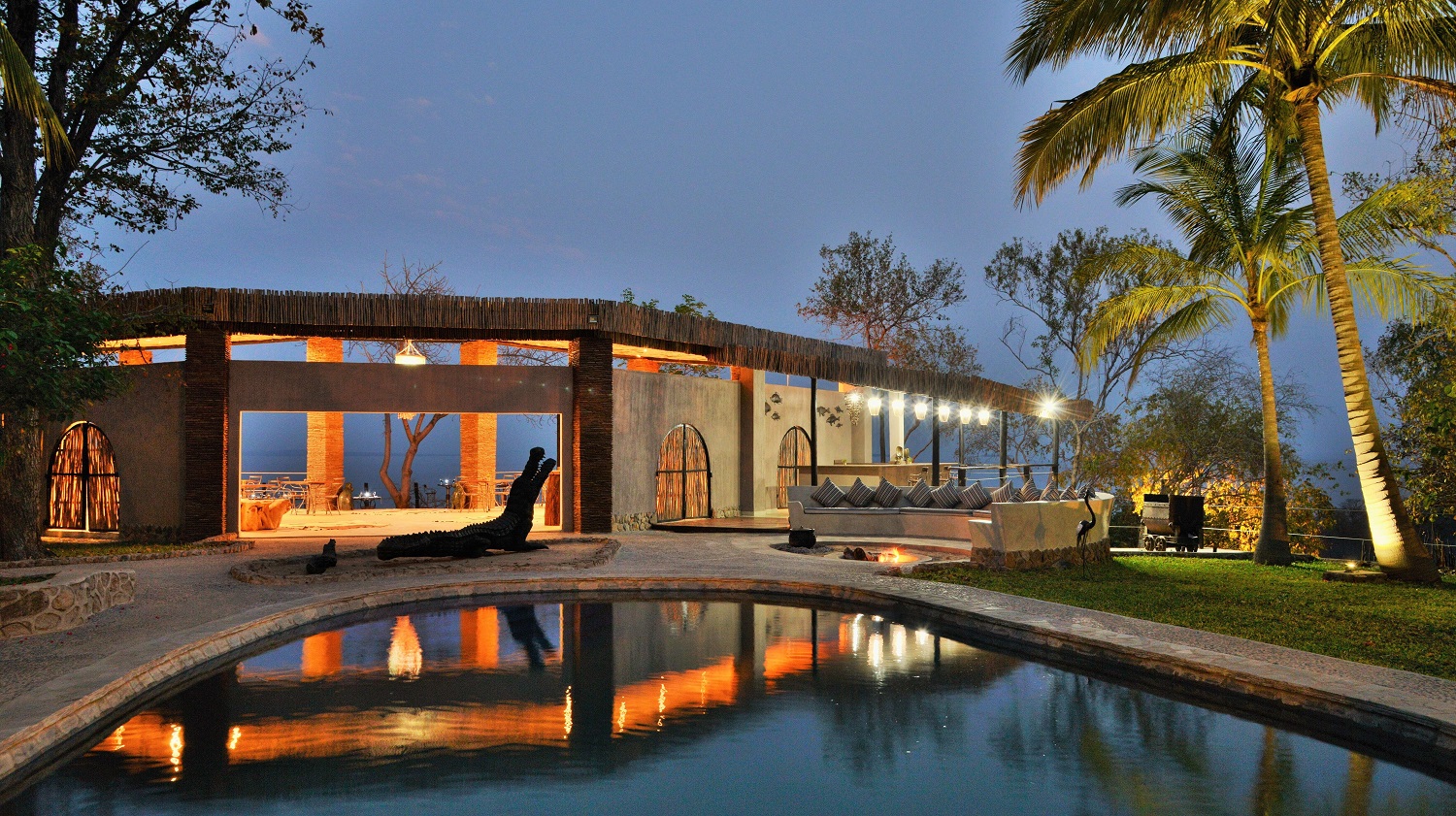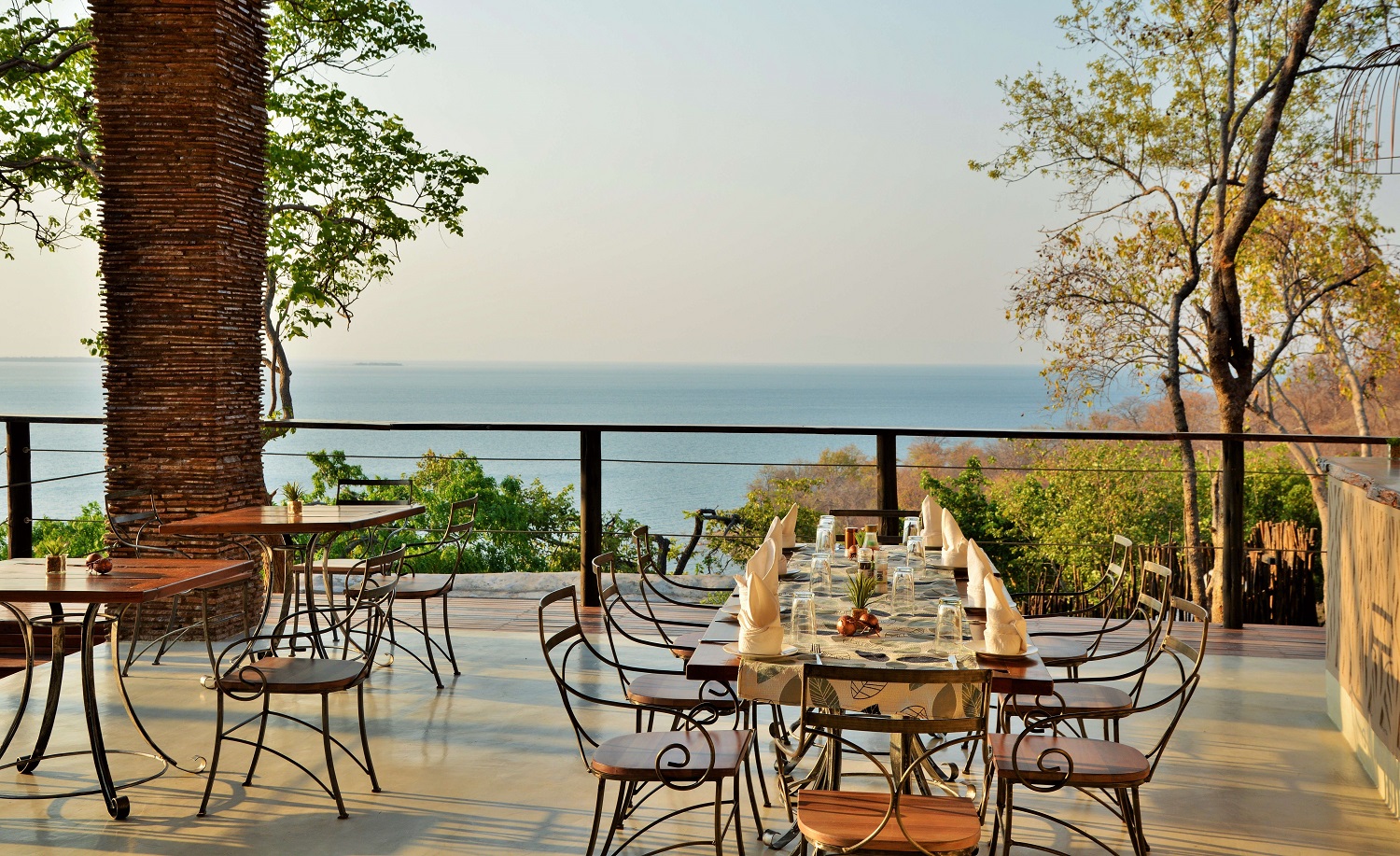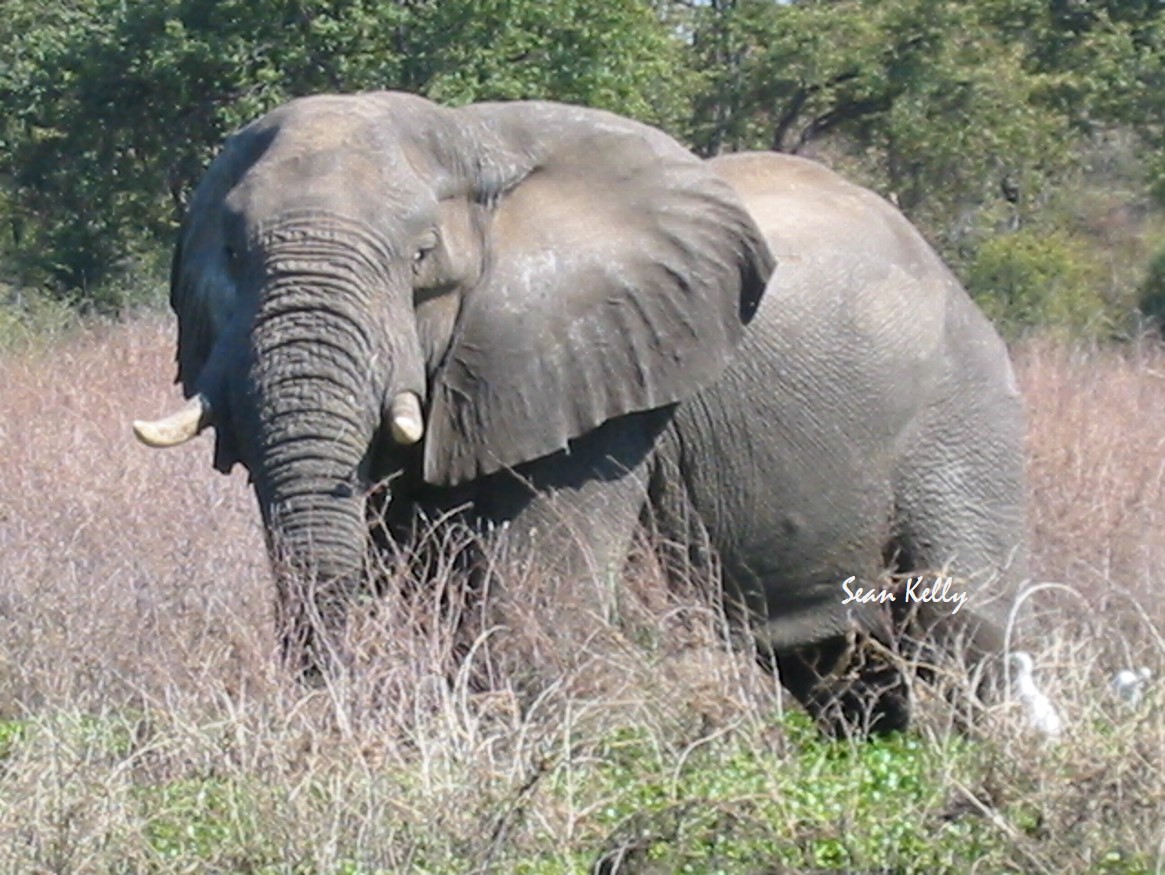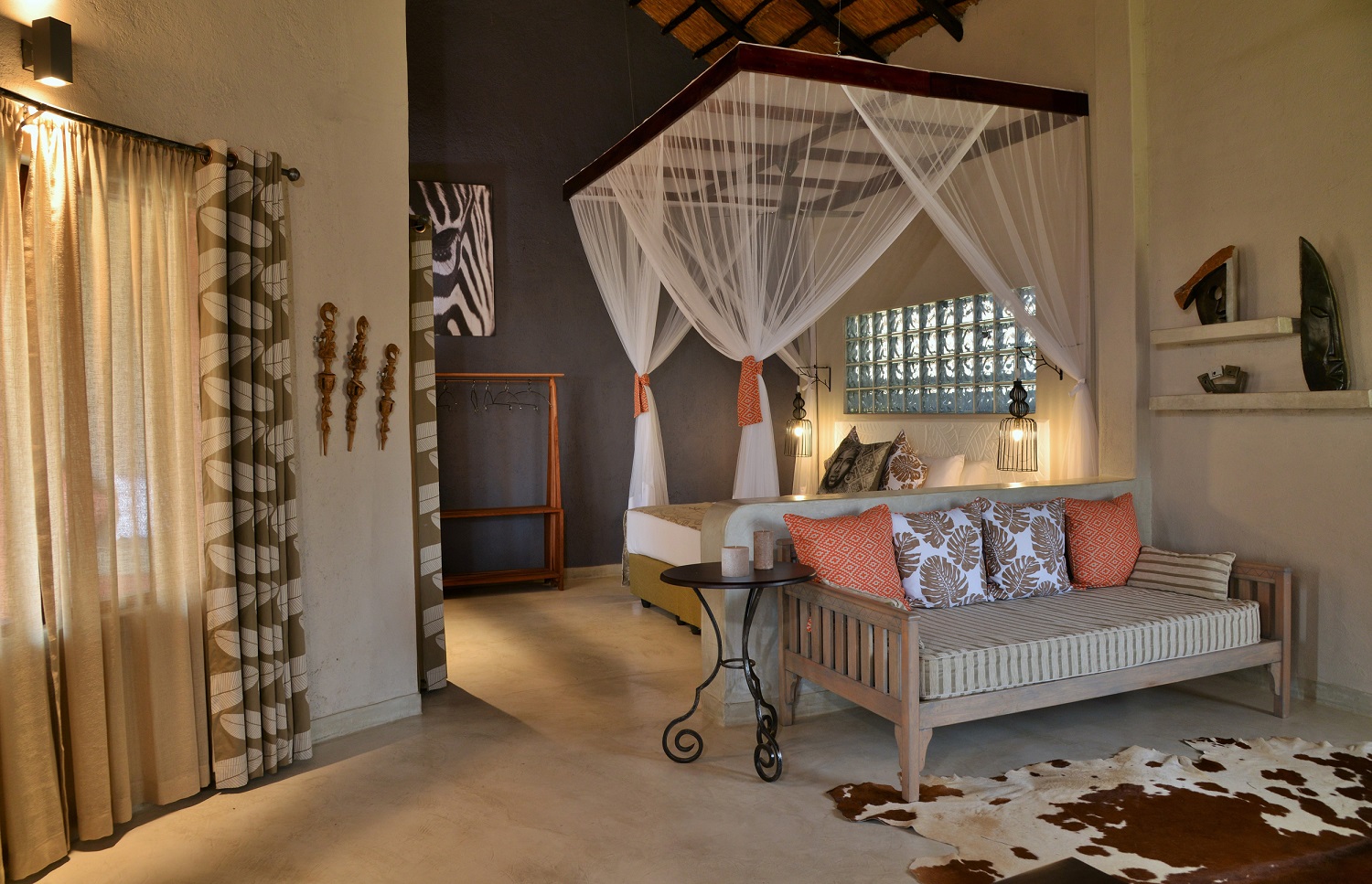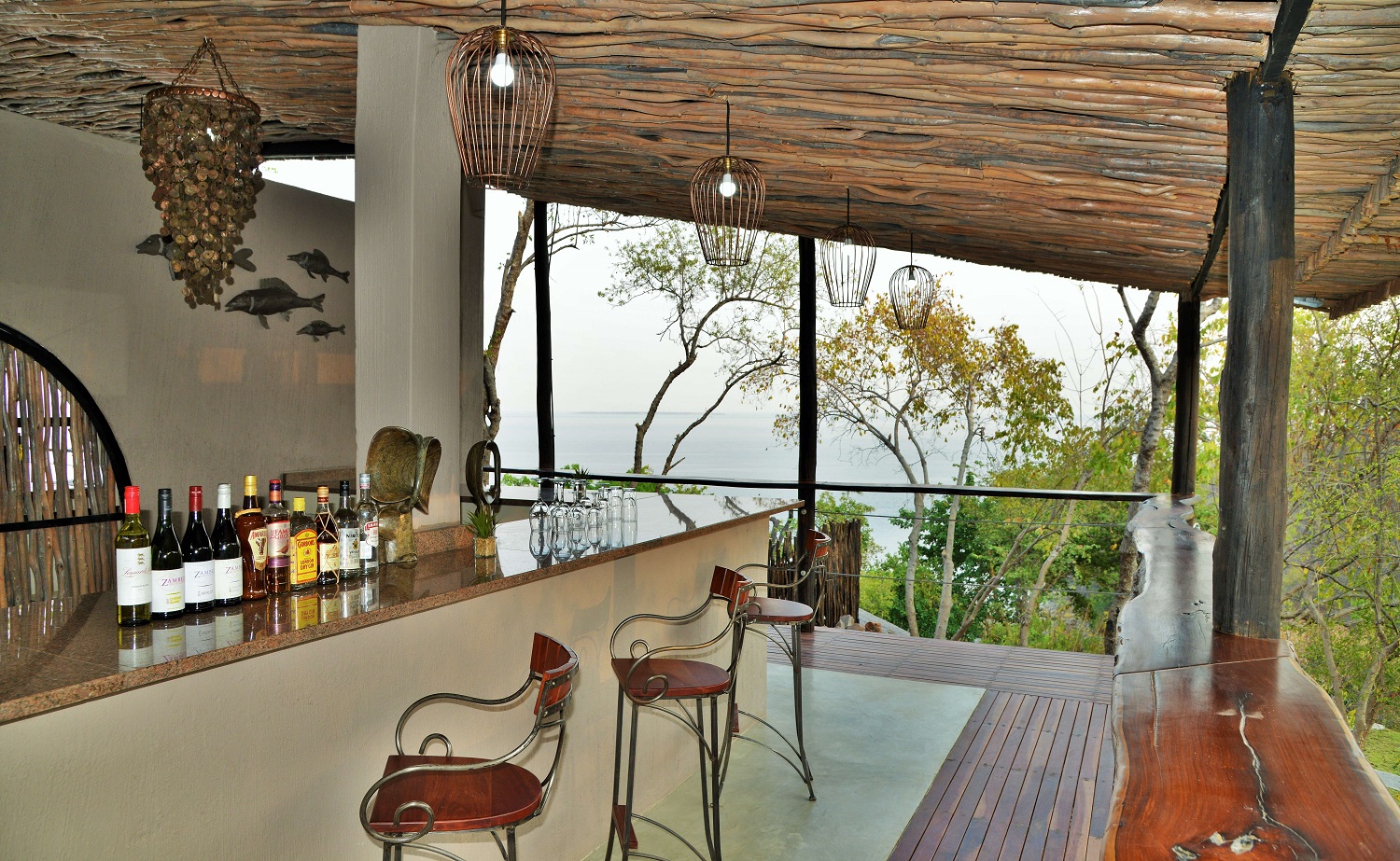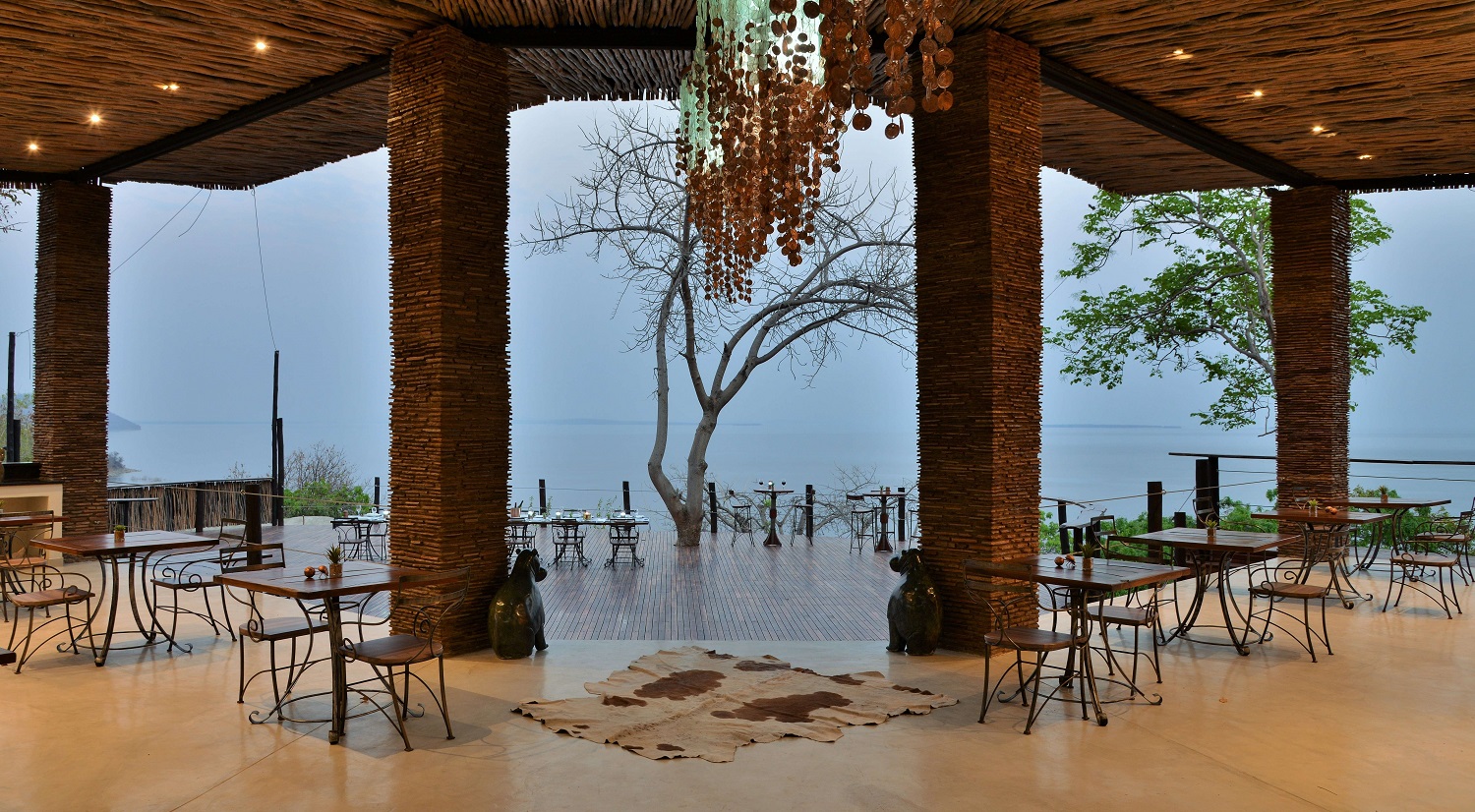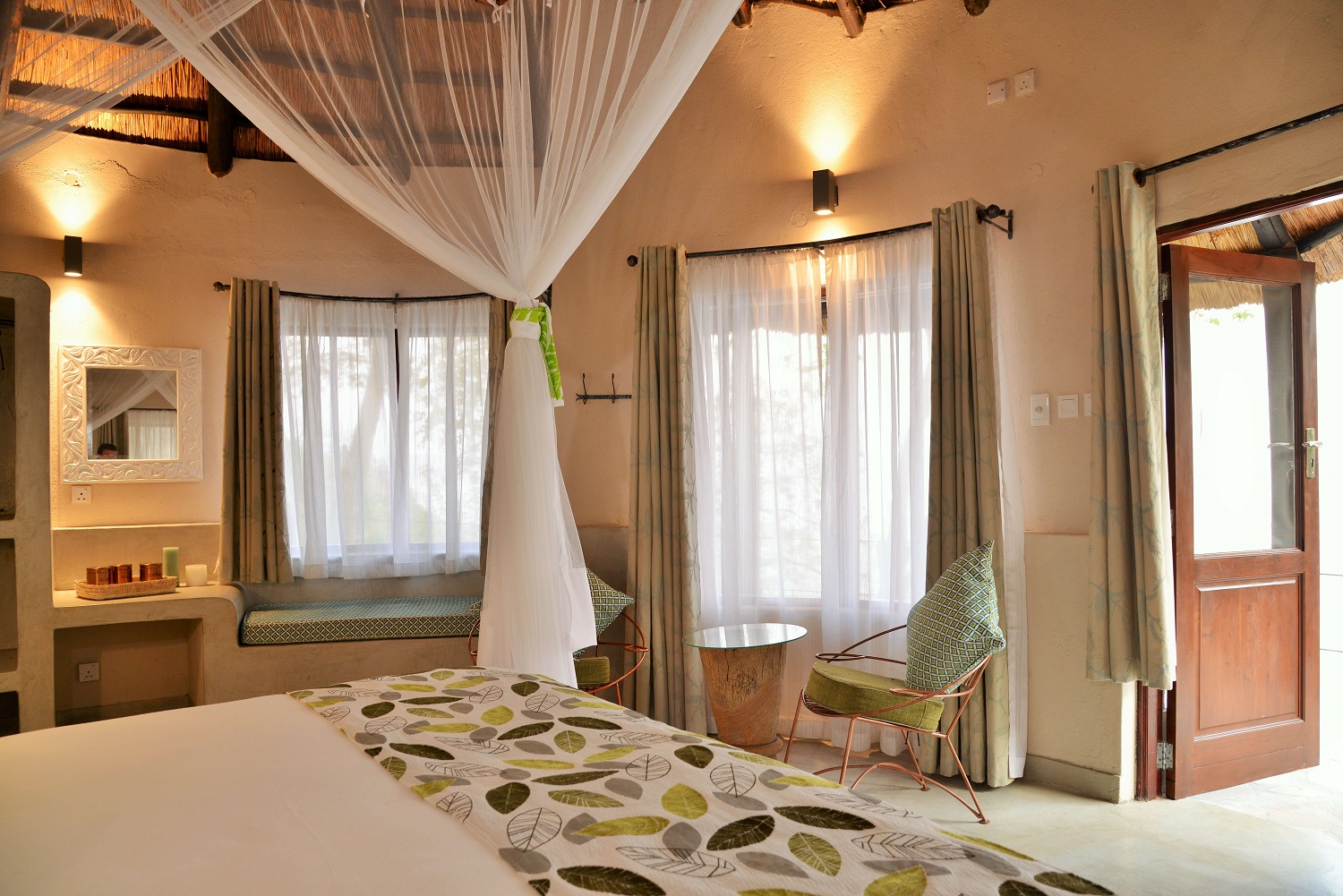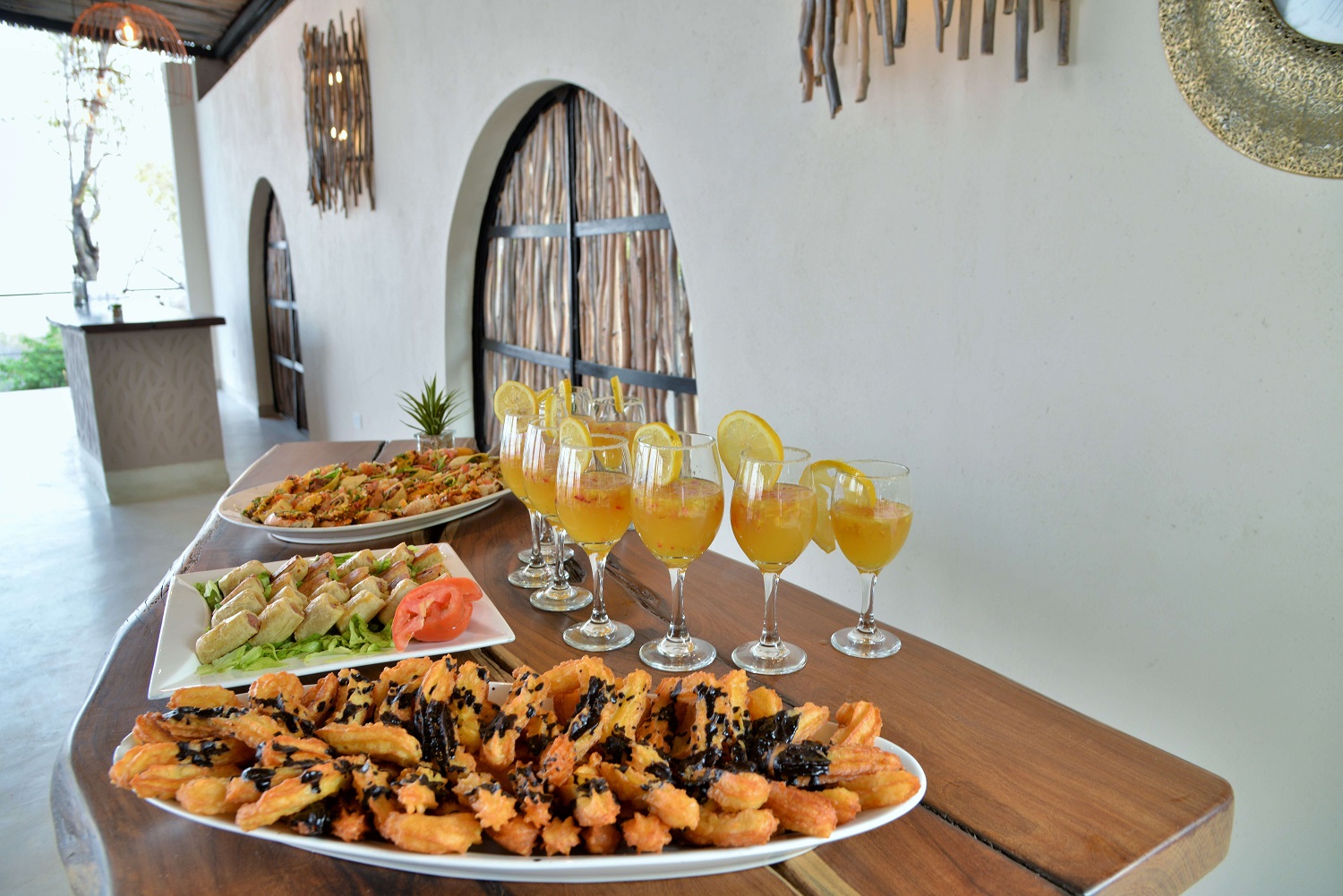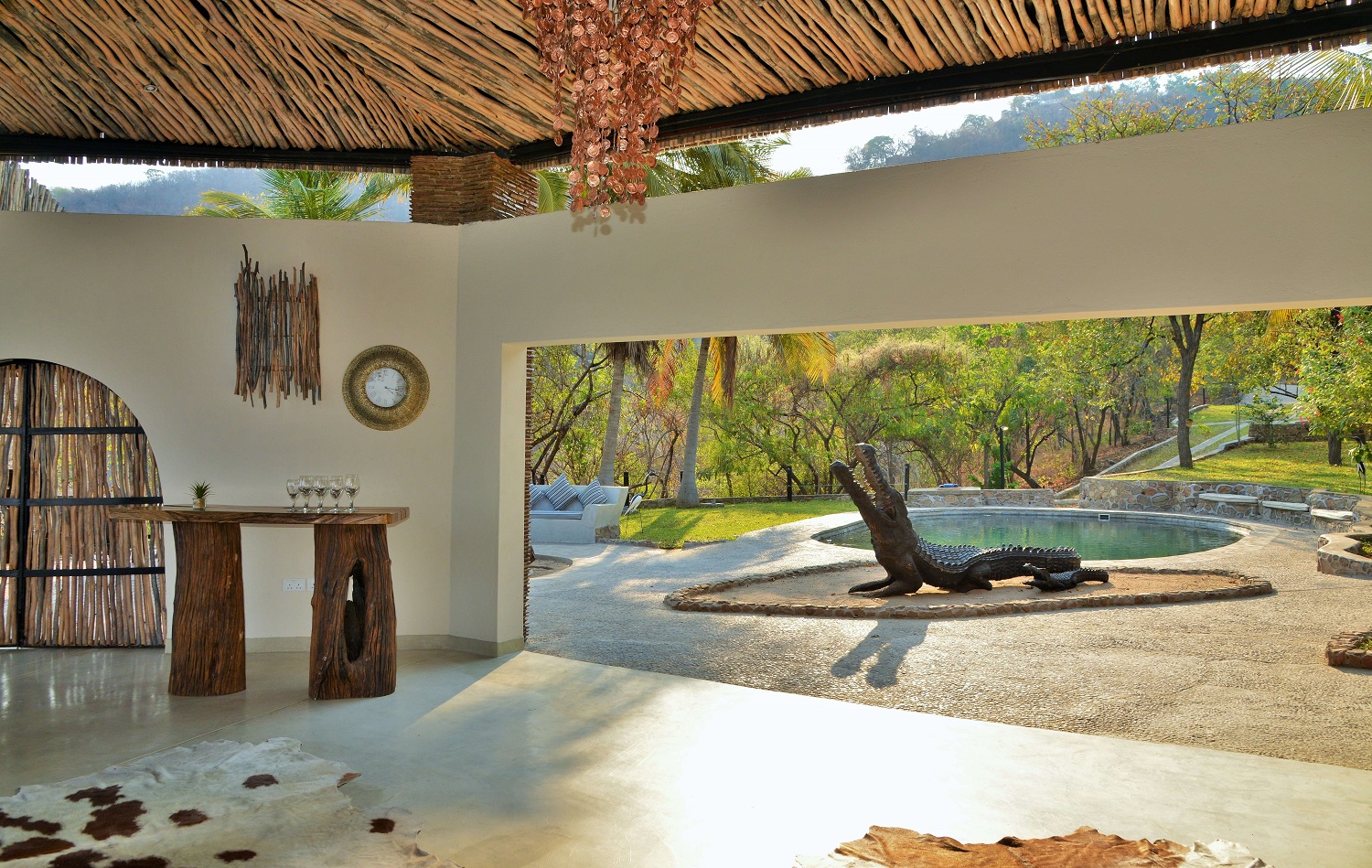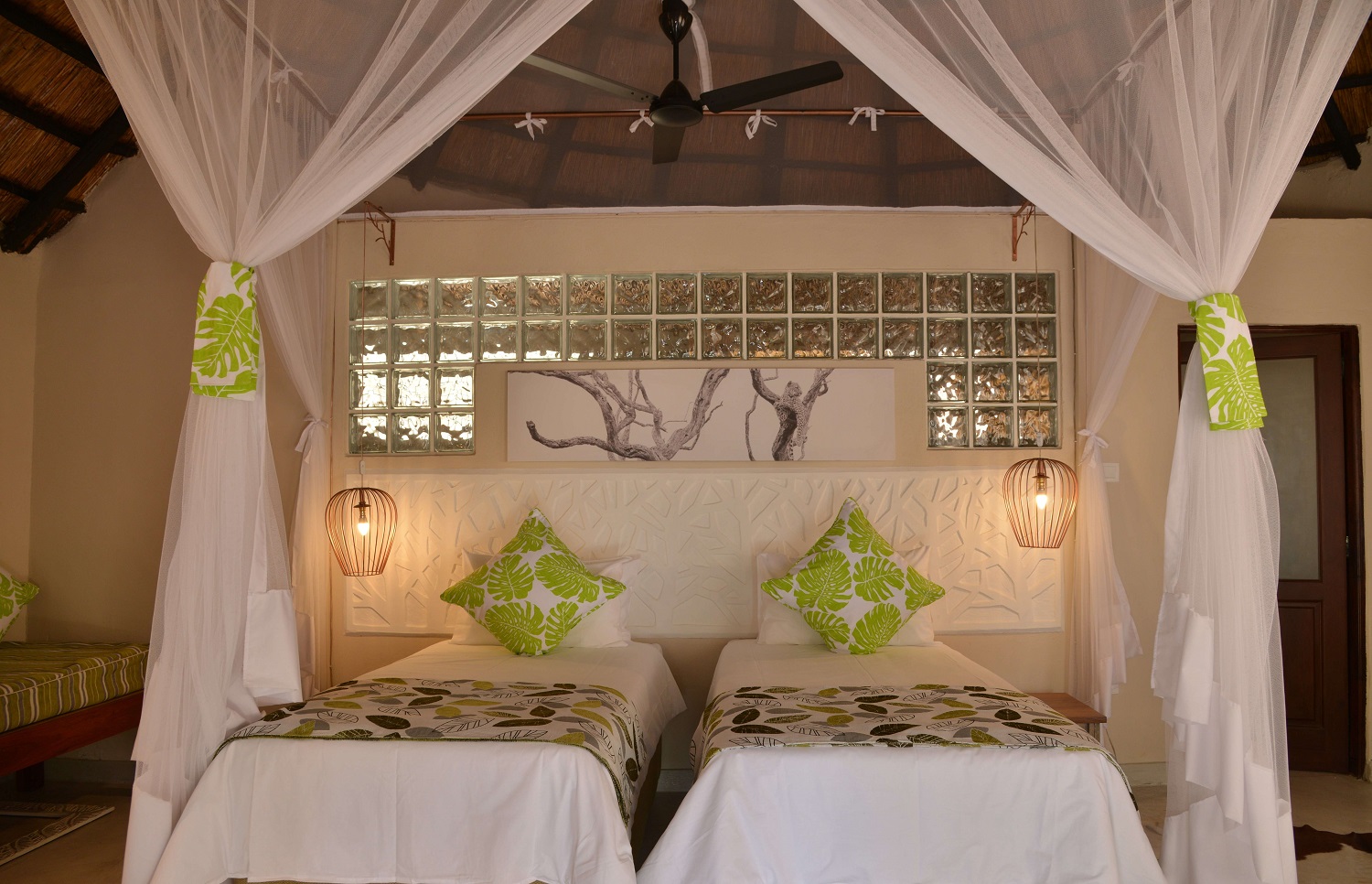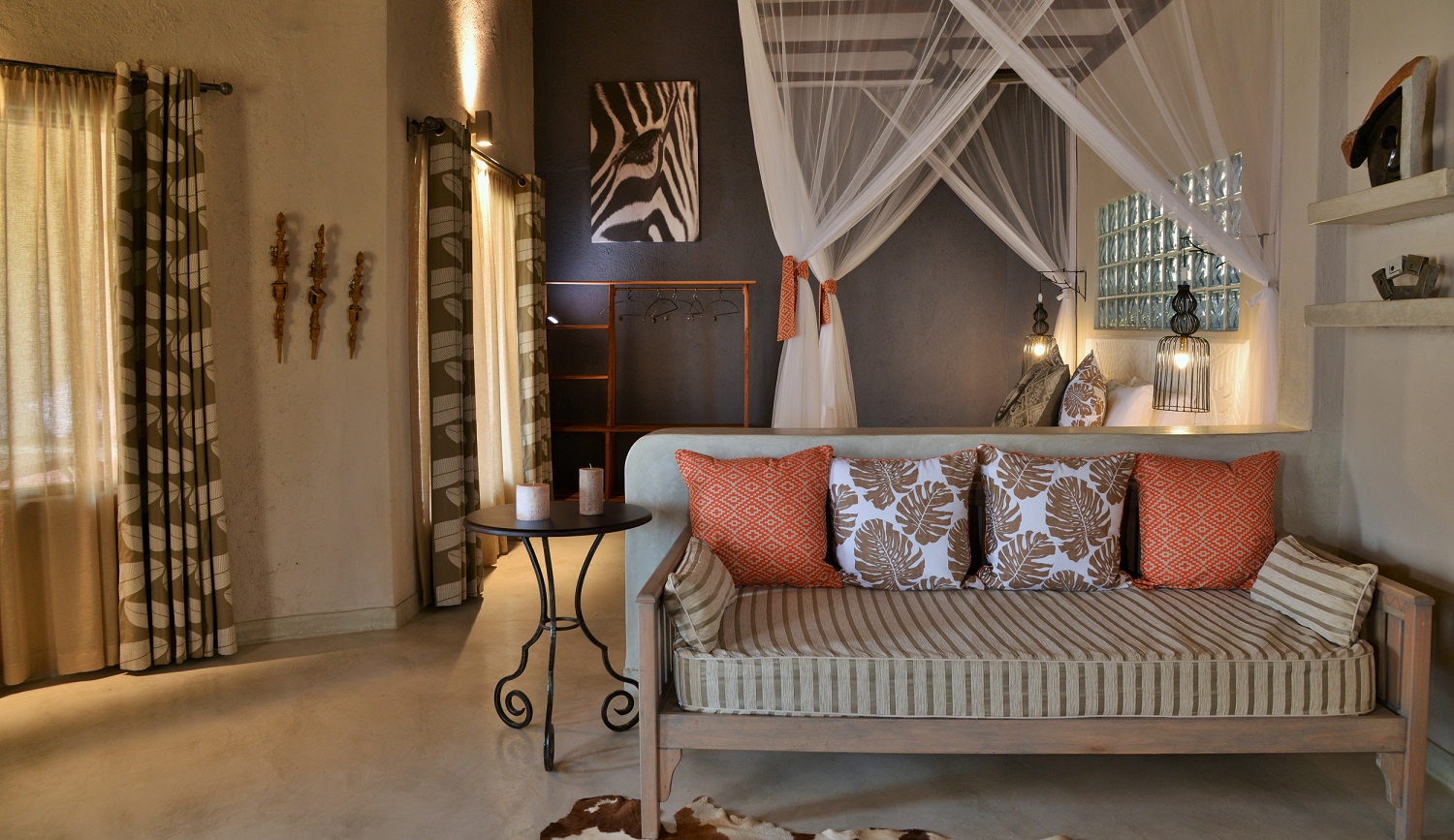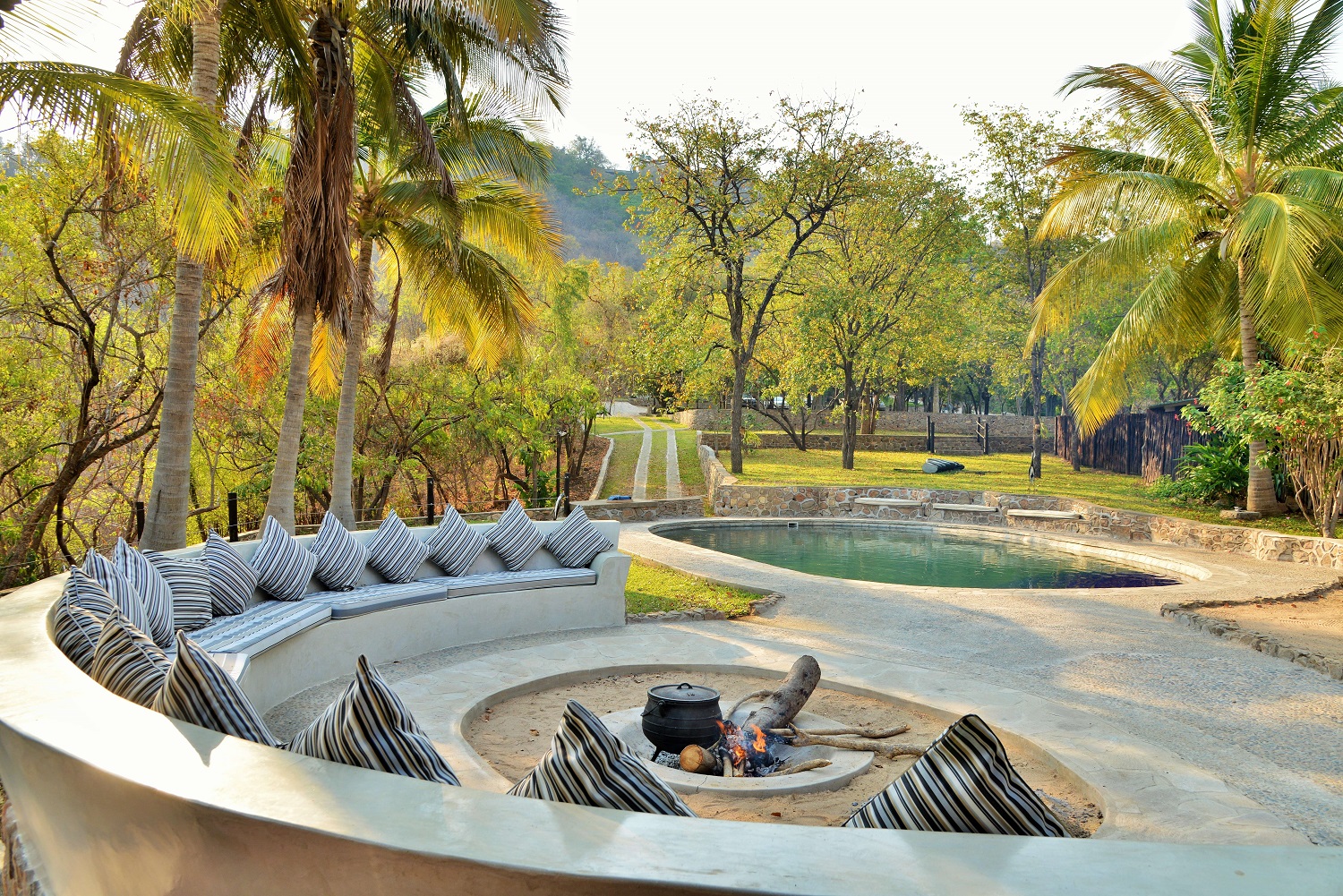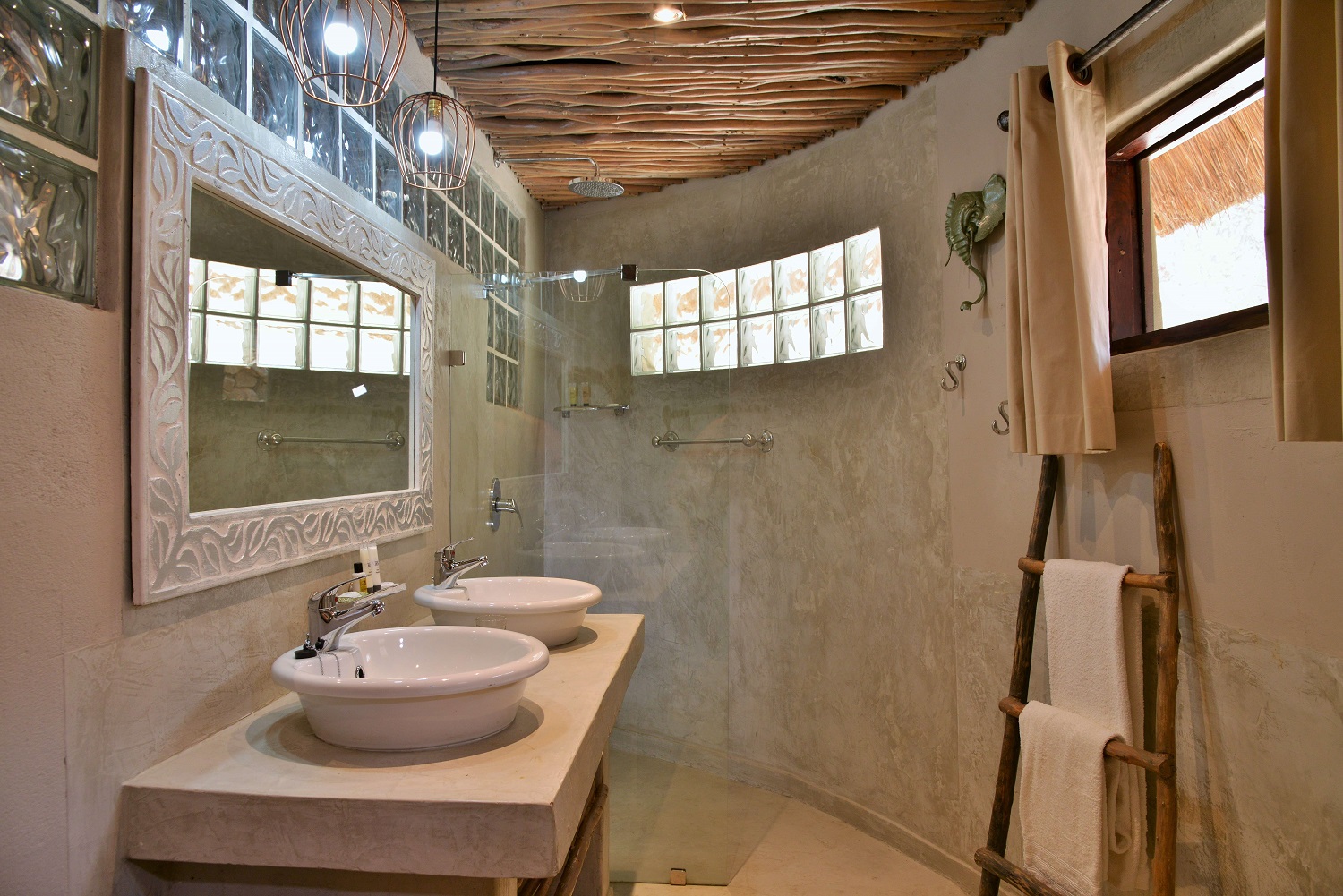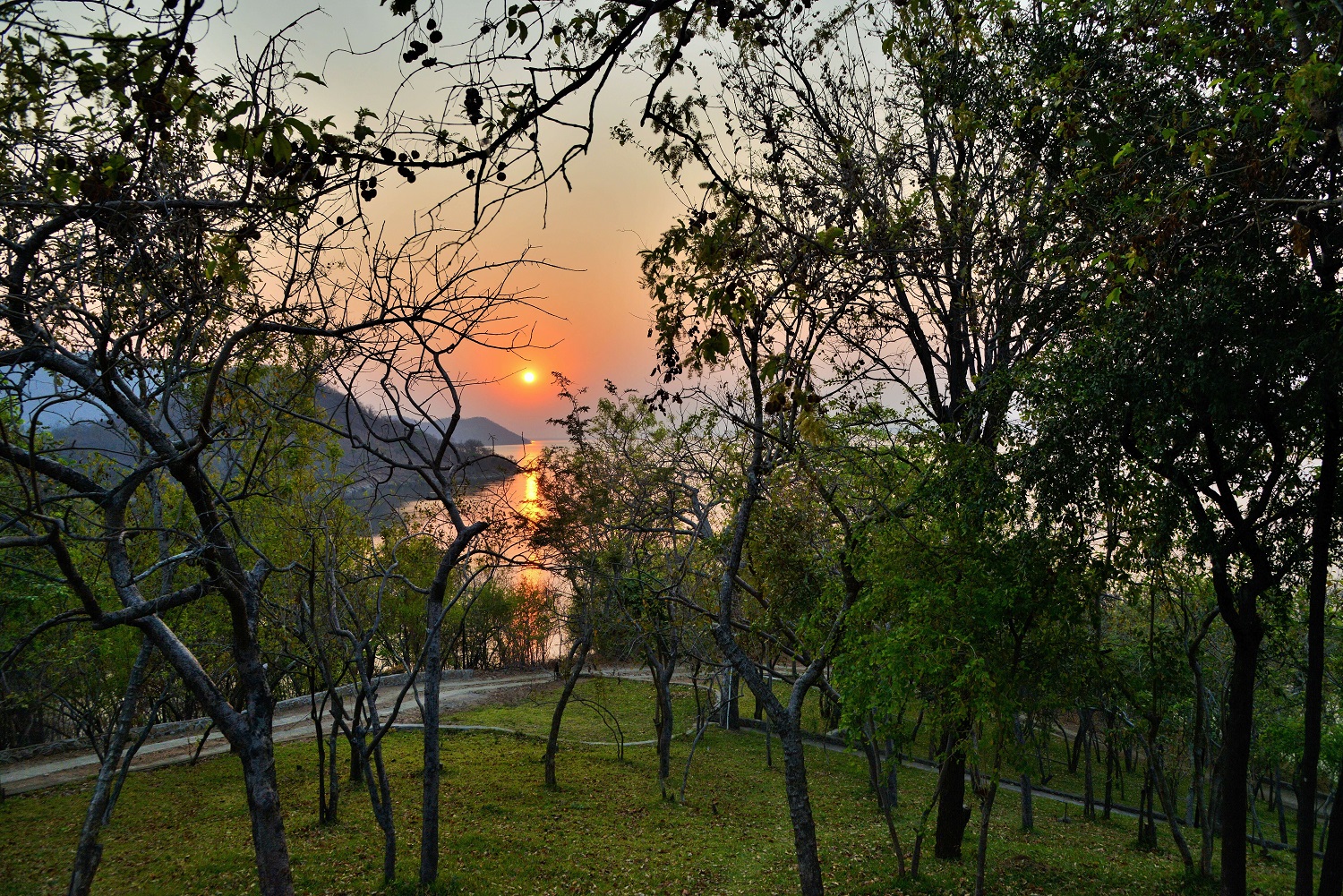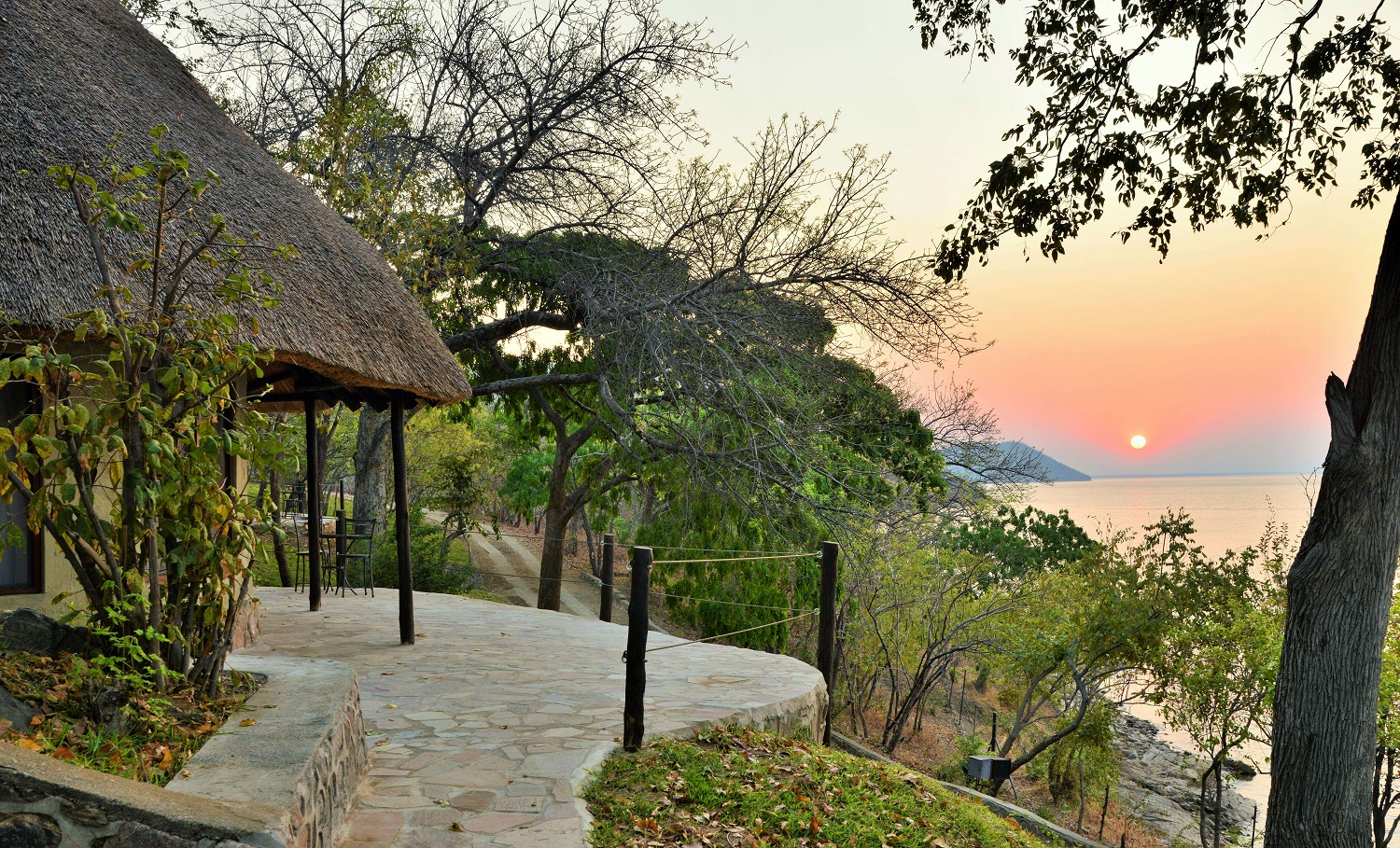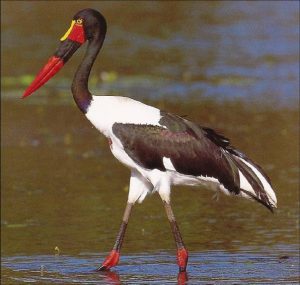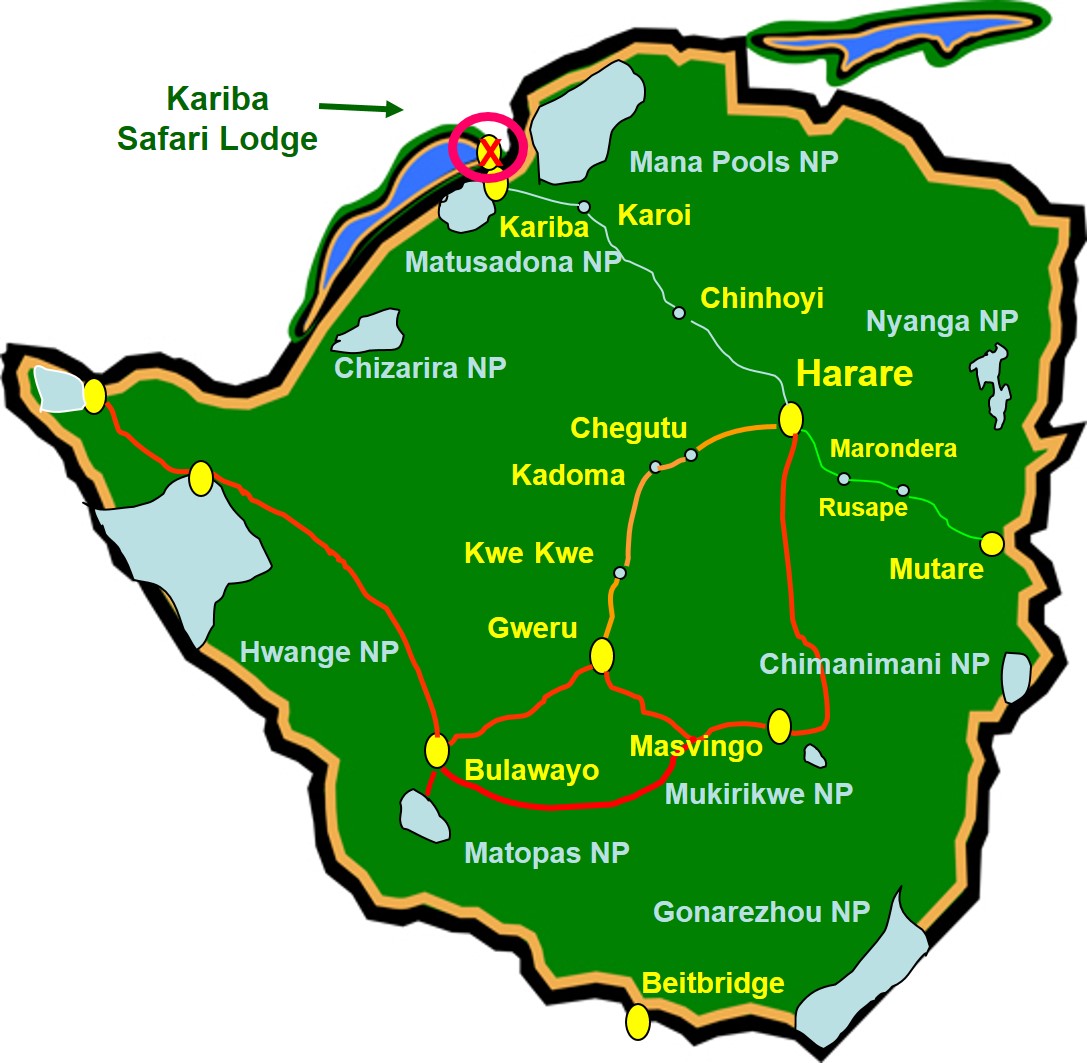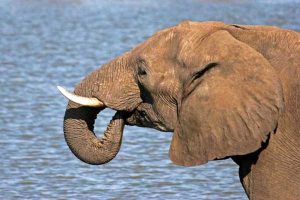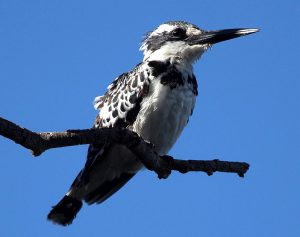Kariba Safari Lodge
Situated on the North Eastern bank of Lake Kariba
Kariba Safari Lodge is situated on a mountainside at Mica Point and has sweeping views over the extensive blue waters and the islands in the eastern basin of the lake. The Lodges and Suites are distributed over 33 acres of forested hillside, sloping down to the lake shore and beach area.
The lodges are positioned on a hillside so guests need to advise us in advance if any assistance is required. Some guests may experience difficulty with the steep inclines and we will try and ensure they are booked into lodges close to the main reception area.
There are nine open-fronted lodges, all with en-suite bathrooms. Each one has it’s own patio and offers wide ranging views of the lake. Every lodge has twin beds that which can be converted into king size doubles.
There are also eight suites, all with en-suite bathrooms and private patios which offer sweeping views of the lake. Each suite can sleep 4 guests in king size double beds and on two Indian day beds.
Kariba Safari Lodge is on the edge of Lake Kariba and in close proximity to a number of wildlife conservation areas which are home to a wide variety of animals and bird life. There are various exciting and relaxing activities to choose from whilst staying at Kariba Safari Lodge. Guests can indulge in superb fishing in the lake where Kariba bream and the renowned fighting Tiger fish is in abundance.
Birding is also popular in the area and guests will likely have sightings of the wonderful Fish eagle and hear its high pitched call echoing through the hills. Visits with the local Tonga people and engaging in cultural experiences with the people is also well worth doing.
At A Glance

Accommodation
Kariba Safari Lodge has a total of 17 rooms, all with views overlooking Lake Kariba. All rooms are premium rooms with balconies and uninhibited views over the lake. .
Lodges: There are nine open-fronted, en-suite lodges. Each have their own patio and offer broad views of the lake directly from your bed. Every lodge has twin beds that can be converted into king size doubles.
Suites: There are eight suites with en-suite bathrooms and private patios. Each suite offers sweeping views of the lake and can sleep 4 guests in king size double beds and on two Indian day beds
Room facilities:
- Fans
- Mini Bar
- Tea / Coffee
- Mosquito nets
- En-suite bathroom
- Pure Cotton Linen
- Safe

Air, Road and Water Access
Kariba Safari Lodge can be accessed by air, road and boat transfer or self-drive.
Air:
Kariba Safari Lodge can also be accessed by light aircraft.
There are various chartered flight options from Harare, Hwange, Mana Pools and Victoria Falls. We recommend Safari Logistics, Alt Air and Wilderness Air. Safari Logistics, which operates road and air transfers in Zimbabwe on a daily seat rate flights (guests don’t have to pay for a private charter, just their seat). Safari Logistics flies between Victoria Falls, Hwange, Kariba, Mana Pools and Harare.
Flying in over Lake Kariba is something truly incredible, leaving you with a clear idea of just how vast the lake is and conjuring up magical stories of what lies underneath the depth of blue waters. You will enjoy views of the rugged Matusadona mountain terrain, outcroppings of islands, a sea of white trees jutting out of the glass like water and herds of elephants grazing on the new shoots of green grass on the shorelines.
Boat Transfers
Boat transfers are carried out in covered speed boats and normally take 90 minutes each way across the lake to Matusadona National Park.
Road:
If you are travelling from Harare by road it will take you approximately 4 hours (370 km) to get to Kariba.
Self-Drive directly to Kariba Safari Lodge is another option from Harare.

Activities
There are several activities at Kariba Safari Lodge that guests can participate in so you can choose how you wish to spend your day. These include:
- Early morning Game Walks on the property
- Guided Fishing. Tiger fishing is a real challenge and pound for pound it is one of the worlds most powerful freshwater species
- Bird watching
- Photography – around the property or on a cruise
- Sunset Cruise
- Half day tour of Kariba which includes a visit to the amazing Kariba Dam Wall, Santa Barbara Chapel, Kariba Heights and a visit to the Mahombekombe Township
Kariba is one of the world’s largest man-made lakes and a genuine African wilderness. There is an extensive variety of wildlife and both on land and from the water there is glorious game viewing.
- Cultural Excursions: The area is home to the Tonga, a delightful and very spiritual people who have resided in the area and along the length of the Zambezi river for centuries. They have preserved ancient traditions and still live a largely subsistence lifestyle that is reliant on fishing, livestock and small scale farming.
- Birding: The Kariba area offers truly incredible bird life, especially water birds, and hundreds of species have been recorded. It is an excellent location for photography of the unique scenery and wildlife.
- Lodge Relaxing: For those that want to take some time out to relax, you do not have to venture too far from the lodge to see wildlife as there are regular visitors including elephants, hippos, crocodiles, and monkeys, amongst many others
- Kariba Dam wall: A visit to the Kariba Dam wall is highly recommended. The dam wall also serves as the Customs point with Zambia which is easily accessible. You will require a visa which can be purchased beforehand.

Wildlife
A good variety of animal and bird species can be seen near the lodge, on the lake shore or within Matusadona National Park.
Animals:
Animals include: elephant, buffalo, night ape, honey badger, civet, small spotted genet, slender mongoose, banded mongoose, spotted hyena, wild cat, lion, leopard, yellow spotted dassie, black rhinoceros, zebra, warthog, common duiker, grysbok, klipspringer, waterbuck, bushbuck, scrub hare, porcupine, vervet monkey, chacma baboon, side-striped jackal, hippopotamus, roan antelope, kudu and bush squirrel.
Some of the more elusive species include: clawless otter, white-tailed mongoose, reedbuck, sable antelope, eland, civet, rusty spotted genet, caracal and bush pig.
Also present but only sighted are: wild dog, cheetah, roan and pangolin
Birds:
Over 240 species of birds have been recorded in the park:
These include: grey herons, goliath herons, great white herons, saddlebill storks, plovers, waders, geese, osprey, woolly-necked storks, open-billed storks, white-winged plovers, Kittlitz’s Plover and Caspian Plover is often seen in the summer months. Red-winged pratincoles, Curlew Sandpiper, Common Sandpiper, Marsh Sandpiper, Wood Sandpiper, Ruff, Common Greenshank and Little Stint are all common.
There are several large colonies of darters and reed cormorants within the tree lines, as well as white-breasted cormorants.
Bee-eater colonies are often found in the sandstone banks and cliffs of the minor rivers that traverse the valley floor.
Most local raptors are present in good numbers and include the Fish Eagle, African Hawk-Eagle, Ayres’s Hawk-Eagle and African Crowned Eagle.

Lake Kariba
Lake Kariba was formed by the construction of the Kariba Dam which was started in 1955 and completed in late 1958.
The dam was designed by the French engineer and designer Andre Coyne who designed over fifty five dams and was a specialist in ‘arch dams’, Kariba being one of them.
The dam was constructed between 1955 and 1959 by Impresit of Italy at a cost of $135,000,000 for the first stage which was the Kariba South power cavern.
Final construction and the addition of the Kariba North Power cavern was built by Mitchell Construction and was completed in 1977 for a total cost of $480,000,000. During construction, 86 men lost their lives.
Over a million cubic metres of concrete was poured into the 128 metre high wall which has a thickness of over twenty four metres, this construction being necessary to withstand the pressure of nearly ten million litres of water which pass through the spillway every second.
At then end of 1958 the sluice gates were closed and in 1963 the maximum level was reached. At the time of its completion it was the largest man made dam in the world and is still today the largest lake by volume.
The lake is two hundred and eighty two kilometres (176 miles) long and in places up to forty kilometres (25 miles) wide. The dam holds 185 cubic kilometres (150,000,000 acre·ft) of water.

Matusadona National Park
The Matusadona is a very unique National Park and one of Zimbabwe’s unspoilt wildlife and wilderness gems. Remote and rugged, Matusadona is characterised by the vast open spaces, spectacular sunsets, extensive wildlife and the numerous ‘skeletal’ trees which remain as a result of the flooding of the Zambezi valley in the early 1960s. This occurred upon completion of the construction of the Kariba dam wall and the resulting rising waters which formed the lake. Kariba dam was built between 1955 and 1959. Over the years many of the submerged trunks of the trees have become ‘fossilised’ and have thus survived for well over fifty years. The trees form important habitats for aquatic birds and breeding grounds for the fresh water fish.
The flooding of the Zambezi Valley to form Lake Kariba gave rise to Operation Noah which was and still is, by far the most extensive wildlife rescue programmes ever undertaken in the world. The flooding of the Zambezi Valley to form the lake created many islands, some only remaining for a short time as the lake rose. As a result many animals became trapped and required rescuing.
The rescue project was named ‘Operation Noah’ and was lead by Rupert Fothergill with the head veterinarian being Dr John Condy who pioneered many of the veterinary procedures used. No rescue programme on this scale had ever been undertaken anywhere in the world and certainly not involving such large numbers and variety of wildlife species. Many of the animals were released into the Matusadona area which had been proclaimed a non-hunting area on 7th November 1958. It became a Game Reserve in 1963 and in 1975 was designated a National Park under the Parks & Wildlife Act. The park is also an ‘Intensive Protection Zone’ for the endangered Black Rhino.

Matusadona Flora
Matusadonha has three distinct ecological areas. First is the lake and shoreline grassland; second, the Zambezi Valley floor, a mass of thick jesse and mopane woodland, and; third, the Escarpment area of Julbernadia and Brachystegia woodlands.
The Jesse/ Mopani area is sparsely grassed, but provides habitat for browsers, most notably the black rhino. Elephants range throughout the Park, seeking the shade of the Jesse in the heat of the day
The Escarpment rises some 700 metres above the Valley floor and is extremely rugged
Open woodlands on the plateau behind the escarpment are dominated by Julbernardia globiflora. The mountain acacia, Brachystegia glaucescens, is also common on the slopes and ridges of the escarpment
From the plateau the park falls abruptly to a flat, low-lying area covered mainly with Mopane scrub and woodland and with dense patches of Jesse bush
Over the years, elephants and fire have caused the once substantial woodlands to dwindle, and in parts, grasslands have taken over. It became necessary to take control measures to control the elephant population to a manageable size
It also became necessary to carry out early burning programmes in the upper escarpment,
to prevent fires from causing serious damage to tree growth. The burning programmes led to significant regrowth in the Escarpment area

Weather
Average Daytime Max Temperatures
- January 32°C
- February 32°C
- March 32°C
- April 32°C
- May 30°C
- June 28°C
- July 27°C
- August 30°C
- September 33°C
- October 36°C
- November 35°C
- December 33°C
Summer day time highs can reach 38° to 42°c
Winter night time lows can reach 5° to 10°c
“…beautiful experience, wonderful views, great weather, excellent animal sightings…what more could we wish for?…”

